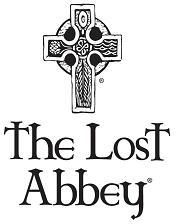 After a very long hiatus, the QUAFF Strong Ale Competition has returned and hosted at The Lost Abbey. This is a BJCP qualified event, which means not only can you obtain points toward your own rank, but any winners of the competition will be eligible to enter GABF as a Pro-Am if, of course, they can find a pro-brewer willing to make their beer on a commercial scale.
After a very long hiatus, the QUAFF Strong Ale Competition has returned and hosted at The Lost Abbey. This is a BJCP qualified event, which means not only can you obtain points toward your own rank, but any winners of the competition will be eligible to enter GABF as a Pro-Am if, of course, they can find a pro-brewer willing to make their beer on a commercial scale.
As a club, always arrive early, even though there is a competition staff, they always need help. Many hands make light work, so arrive early and ask where you can pitch in, this will ensure the event starts on time and runs well. The tasting room floor of a brewery was a new location to judge beers, but being a seasoned veteran of judging, you simply tune out the noise and get down to business. Here’s a pro-tip: if you’re interested in winning awards, make a special effort to enter competitions with a small number of entries. The odds of your winning will increase dramatically if you’re not competing against 80 to 100 other beers (say IPA).
My judging partners for the event were Cole Davisson and Liz Chism and we were assigned the Strong Ale catagory 19 with one entry from Strong Scotch Ale cat 9E. To our absolute delight, the beers were all very well made and showing few signs of brewing errors, for the most part. Having judged for the past 3 years, there has been a dramatic increase in the quality of homebrew. The beer revolution is certainly on at all levels and with quality going up, competitions will become much more difficult. Just because your beer didn’t place doesn’t mean it wasn’t bad, but on that day and at that time with all the little variables considered, it just wasn’t the best beer put before the judges.
Palate fatigue is a problem which both the competition committee and judges have to address. The committee must insure you’re not sitting down to a flight that is too large and judges need to monitor their intake to avoid burning out their palate. Which means, small sips and a detailed study of all the flavors per sip, trying to reduce the amount of time each sample has to make sure the last beer can be judged as well as the first beer. It’s a very fine line of how much you need to consume and for each judge it’s different. Practice and repeat judging sessions will help you tune in your ability. This is also the very reason to advance within the BJCP you need judging points. Nothing beats real world experience.
Being a judge, you never know what catagory you may be assigned to. Sure you’ve studied and taken the tasting and/or written exam, but none of us drinks from the entire style regularly enough to always be spot on. Well at least me anyway, I can’t speak for everyone. One thing I do when I get my assignment is if I’m not as familiar with the category, for the 2 days before the event, I’ll go snag singles from the classic examples and have 2 a night while reading over the style description. This allows me to re-familiarize myself with the style and the range within the style. Thus when I sit down to judge it’s fresh in my memory of what I should be looking for and also detect what shouldn’t be there.
In all the event was fun, judges and stewards were given wrist bands for free samples after the event, which was an added bonus and we were served lunch as well. Given the flights were small, the event progressed quickly and smoothly. I had a great time and this was another really well run event. I can’t help but think that QUAFF ought to host a competition strictly limited to Cat 14: IPA, given it’s popularity.
QUAFF Strong Ale Challenge Results
Larry Stein took a stop motion film of the competition, and yes, we do judge this fast!
Cheers!
EW





